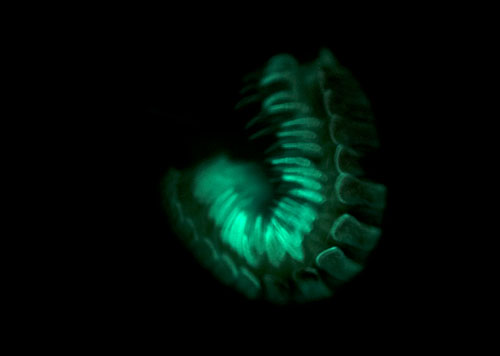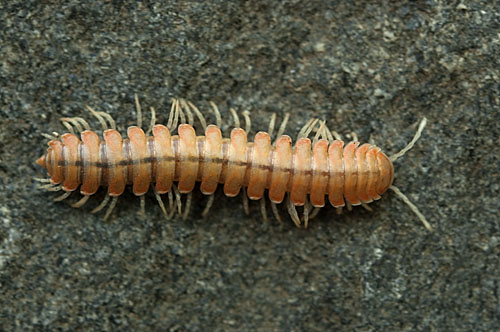The following is a guest post from millipede expert Paul Marek.

The eerie glow of a Motyxia millipede (photo by P. Marek)
I study millipedes in the family Xystodesmidae (order Polydesmida). These millipedes contain hydrogen cyanide as a defensive chemical and use aposematic coloration to warn predators of their toxicity. Coloration patterns in these species include bright yellows, oranges, reds, and violet.
One nocturnal genus in this family, Motyxia, known only from California, does not display conspicuous coloration. These millipedes do something even more remarkableâthey produce a green bioluminescent glow at a dominant wavelength of 500 nm by way of a biological source of light in their exoskeleton. Scientists have speculated that the emitted light could be a sexual signal to attract mates, or an aposematic warning glow to announce the presence of a cyanide-based chemical defense.

Motyxia sequoiae by daylight (photo by P. Marek)
So far as is known, millipedes in the order Polydesmida all are blind, suggesting that the predator-warning hypothesis might be more likely. The source of light in Motyxia is a chemical called pterin, first discovered for its role in butterfly pigmentation but perhaps independently evolved in these unique millipedes to function like a luciferin molecule, similar to the well-known firefly luciferin (the structure of the analogous luciferase molecule for Motyxia is unknown). Other than the genus Motyxia, there are no other confirmed accounts of bioluminescence among millipedes.

Fascinating. Bioluminescence never ceases to intrigue me.
Can the millipedes turn their light on & off or is it always on?
Hi Aydin,
Yes! The millipedes can turn their light on & off. The intensity also seems to vary with stimulation. If I find a dark one on the forest floor it will often times glow brighter just by picking it up.
Paul